Our law firm is currently investigating complaints from government entities involving pollution from perfluoroalkyl substances (PFAS). These substances include a number of chemically-related compounds used in industrial processes, manufacturing, and numerous household products, and are known to be carcinogenic.
Unfortunately, largely because of manufacturing and industrial use, PFAS have been detected in public and private water supplies across the country. Remediation is difficult and costly. Our firm is assisting public and private entities in recovering costs involved in the removal and remediation of PFAS.
The sale of PFAS has been a major source of revenue for companies such as DuPont and 3M. As a critical component in the creation of water and stain repellents for textiles (i.e., fabric, carpet, and upholstery), PFAS represents an annual revenue stream of $1 billion. The secondary market for PFAS is in emulsifiers for lubricants, spray-on coatings, paints, and polishes. Sales in this area account for an additional $100 million per year.
PFAS are also used as an ingredient in the manufacturing of:
- flame retardants and extinguishing foams
- ink
- pesticides
- hydraulic fluids for the auto and aerospace industries
- medical devices
- components of color copiers and printers
- metal plating (such as chrome)
- coating for non-stick cookware
- food packaging
Understanding: PFAS
Environmental Impact
Because PFAS have been used so extensively over several decades, it is present virtually everywhere in the environment. In June 2017, the Environmental Working Group published a report which found PFAS contamination in water supplies in 27 states across the country, affecting approximately 15 million Americans. These chemicals have been found in varying amounts in the blood of virtually all humans as well as domestic animals and wildlife. These chemicals were listed in 2009 as “persistent organic pollutants,” or POPs, under the Stockholm Convention, an international treaty ratified in 2004 in order to bring an end to the manufacture and use of non-biodegradable substances such as PFAS.
Unfortunately, PFAS are highly resistant to environmental degradation through natural processes such as decay and sun and weather exposure. Once released into the environment, PFAS remain almost indefinitely. Scientific studies show the half-life (the length of time needed for half of the amount of a substance to degrade) of PFAS to be 10,000 years. When released into water supplies, that half-life is more than 1 million years.
Health Consequences
The impact of PFAS on human and animal health are varied and serious, and can result in exposure levels as little as .05 parts per billion. PFAS have been recognized by medical science as human carcinogen. Exposure can cause testicular and kidney cancer. Other disorders that have been attributed to, or associated with PFAS exposure, include:
- high cholesterol
- pre-eclampsia(also known as toxemia, a potentially dangerous complication of pregnancy)
- thyroid dysfunction (particularly in young children) and cancer
- mental impairment and developmental disability
- infertility
- autoimmune disease
- blood disorders
- ulcerative colitis
How and Where Do PFAS Enter the Water Supply?
PFAS enters the water supply primarily through the discharge of industrial waste. This can happen in rivers and streams, but can also occur when such waste products end up on the ground as well. When it rains, these substances make their way into underground aquifers. Unfortunately, the problem does not end there. Because PFAS are not biodegradable, they accumulate as they make their way into the food chain.
As PFAS are used in fire suppressant foams, one probable source is fire training facilities as well as places that have recently experienced serious fires. Because PFAS are often a component of heavy-duty lubricants and hydraulic fluids, contamination is commonly found in water sources near military bases and industrial sites. Water wells near a former US Air Force base in Michigan were found to contain 10,000 times the lifetime health advisory set by the EPA. In July of 2018, Michigan Lt. Governor Brian Calley declared a state of emergency over levels of PFAS in water supplies in two Kalamazoo communities.
According to a peer-reviewed study published in the journal Environmental Research in August 2018, approximately 6 million Americans are still exposed to water contaminated with PFAS that exceed EPA advisory levels. A recent map from the Environmental Working Group shows serious levels of PFAS contamination in water supplies for cities and towns along the Atlantic seaboard, the California Coast and south Puget Sound.
Unfortunately, the options for removing PFAS contamination from water supplies are limited and expensive. Granular activated carbon (GAC) filtration can remove 99.9% of PFOA and PFOS. However, shorter chain PFASs, such as GenX, require more intensive filtration methods such as ion exchange and reverse osmosis. Putting such equipment in place and starting the filtration process can cost over $1 million. Annual ongoing expenses run into the six-figure range, putting a heavy burden on affected communities.
Holding Polluters Accountable:
In February 2018, the State of Minnesota reached a settlement with 3M, a manufacturer of the water-repellent Scotchgard. The settlement resolved litigation that had been going on since 2010. Three months earlier, state health authorities discovered an unusual number of premature births and cases of cancer in the Minneapolis area. Because of this, state Attorney General Lori Swanson announced that she would be seeking punitive damages that would have cost the defendant $5 billion. Just before the case was scheduled to go to trial, 3M settled the case for $850 million but has not admitted to any wrongdoing. According to AG Swanson, the settlement funds will be used for PFAS removal.
Currently, our firm is working with public and private utility companies in recovering the massive costs involved in PFAS removal from water supplies. Defendants include PFAS manufacturers as well as companies that use such chemicals in their manufacturing processes or finished products.
To find out more or to file a PFAS-related lawsuit claim, call us at




